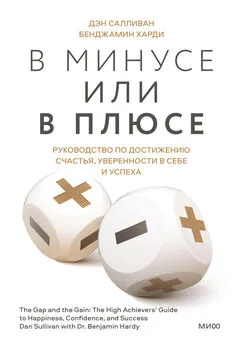Бен Уилсон - Метрополис. Город как величайшее достижение цивилизации
- Название:Метрополис. Город как величайшее достижение цивилизации
- Автор:
- Жанр:
- Издательство:Эксмо
- Год:2021
- Город:Москва
- ISBN:978-5-04-157333-1
- Рейтинг:
- Избранное:Добавить в избранное
-
Отзывы:
-
Ваша оценка:
Бен Уилсон - Метрополис. Город как величайшее достижение цивилизации краткое содержание
Британский историк Бен Уилсон, автор научных бестселлеров, расскажет удивительную историю города как явления. Совершив путешествие по знаменитым городам прошлого и настоящего, вы почувствуете силу и мощь городов, их влияние на историю человечества и цивилизацию в целом.
В формате PDF A4 сохранён издательский дизайн.
Метрополис. Город как величайшее достижение цивилизации - читать онлайн бесплатно ознакомительный отрывок
Интервал:
Закладка:
182
Roger Crowley, City of Fortune: how Venice won and lost a naval empire (London, 2011), p. 66.
183
O City of Byzantium: annals of Niketas Choniates, trans. Harry J. Magoulias (Detroit, 1984), p. 317.
184
M. Schmidt, Veröffentlichungen zur Geschichte der Freien un Hansestadt Lübeck (Lübeck, 1933), Vol. 12, pp. 42–3; Ernst Deecke, Der Lübeckischen Gesellschaft zur Beförderung gemeinnütziger Thätigkeit (Lübeck, 1939), p. 33.
185
Досл. «Пляска Смерти».
186
Rhiman A. Rotz, ‘The Lubeck uprising of 1408 and the decline of the Hanseatic League’, Proceedings of the American Philosophical Society, 121:1 (February 1977), 17ff, 24.
187
Ibid., 31.
188
J. Kathirithamby-Wells, ‘The Islamic City: Melaka to Jogjakarta, c .1500–1800’, Modern Asian Studies , 20:2 (1986), 333–51.
189
Johanek, pp. 146–8; Athanasios Moulakis, Republican Realism in Renaissance Florence: Francesco Guicciardini’s Discorso di Logrogno (Lanham, 1998), p. 119.
190
Manuel Eisner, ‘Interactive London Medieval Murder Map’, University of Cambridge: Institute of Criminology (2018), https://www.vrc.crim.cam.ac.uk/vrcresearch/london-medieval-murder-map.
191
«Божественная комедия». Пер. М. Лозинского.
192
Judith B. Sombré (trans.), ‘Hieronymus Munzer: Journey through Spain and Portugal’, http://munzerama.blogspot.com/2017/04/hieronymous-munzer-journey-through.html.
193
Roger Crowley, Conquerors: how Portugal seized the Indian Ocean and forged the first global empire (London, 2015), p. 4.
194
Ibid., p. 19.
195
Ibid., pp. 64–5.
196
William Brooks Greenlee, The Voyage of Pedro Álvares Cabral to Brazil and India (London, 1937), pp. 83–5.
197
Gaspar Corrêa, The Three Voyages of Vasco da Gama, and his viceroyalty (London, 1896), p. 295; Crowley, chapter 7.
198
Crowley, pp. 131ff.
199
Ibid., p. 128.
200
Чуть более 16 километров.
201
Китайская лодка, что служит также домом.
202
Tomé Pires, The Suma Oriental, 2 vols, ed. and trans. Armando Cortesáo (London, 1944), p. 285.
203
Ibid., p. 287.
204
Barry Hatton, Queen of the Sea: a history of Lisbon (London, 2018), pp. 55ff.
205
Annemarie Jordan Gschwend and Kate Lowe, ‘Princess of the Seas, Queen of the Empire: configuring the city and port of Renaissance Lisbon’, in Gschwend and Lowe (eds.), The Global City: on the streets of Renaissance Lisbon (London, 2015).
206
Annemarie Jordan Gschwend, ‘Reconstructing the Rua Nova: the life of a global street in Renaissance Lisbon’, in Gschwend and Lowe (eds.).
207
Hatton, pp. 71ff.
208
Michael Wood, Conquistadors (Berkeley, CA, 2000), p. 53.
209
Georgia Butina Watson and Ian Bentley, Identity by Design (Amsterdam, 2007), p. 74.
210
Anne Goldgar, Tulipmania: money, honour, and knowledge in the Dutch Golden Age (Chicago, 2007), p. 10.
211
William Temple, The Works of Sir William Temple, 2 vols. (London, 1731), Vol. II, p. 60.
212
The Philosophical Writings of Descartes: volume III, the correspondence, trans. John Cottingham, Robert Stoothoff, Dugald Murdoch and Anthony Kenny (Cambridge, 1991), p. 32.
213
Joseph de la Vega, Confusion de Confusiones (Boston, MA, 1957), p. 21.
214
Ibid., p. 11.
215
Ibid., p. 28.
216
R. E. Kistemaker, ‘The Public and the Private: public space in sixteenth- and seventeenth-century Amsterdam’, in Arthur K. Wheelock Jr and Adele Seeff, The Public and Private in Dutch Culture of the Golden Age (Newark, 2000), p. 22.
217
Ibid., p. 21.
218
The Travels of Peter Mundy, in Europe and Asia, 1608–1667, ed. Sir Richard Carnac (Temple, 1914), Vol. IV, pp. 70–1.
219
Simon Schama, The Embarrassment of Riches: an interpretation of Dutch culture in the Golden Age (Berkeley, CA, 1987).
220
Bryant Simon, ‘Consuming Third Place: Starbucks and the illusion of public space’, in Miles Orvell and Jeffrey L. Meikle (eds.), Public Space and the Ideology of Place in American Culture (Amsterdam, 2009), pp. 243ff; Howard Schultz and Dori Jones, Pour Your Heart into It: how Starbucks built a company one cup at a time (NY, 1997), p. 5.
221
Jee Eun Regina Song, ‘The Soybean Paste Girl: the cultural and gender politics of coffee consumption on contemporary South Korea’, Journal of Korean Studies , 19:2 (Fall 2014), 429–48.
222
Seyed Hossein Iradj Moeini, Mehran Arefian, Bahador Kashani and Golnar Abbasi, Urban Culture in Tehran: urban processes in unofficial cultural spaces (e-book, 2018), pp. 26ff.
223
W. Scott Haine, ‘“Café Friend”: friendship and fraternity in Parisian working-class cafés, 1850–1914’, Journal of Contemporary History, 27:4 (October 1992), pp. 607–26; W. Scott Haine, The World of the Paris Café: sociability among the French working class, 1789–1914 (Baltimore, 1998), p. 1, 9; Barbara Stern Shapiro and Anne E. Havinga, Pleasures of Paris: from Daumier to Picasso (Boston, MA, 1991), p. 123.
224
John Rewald, History of Impressionism (NY, 1946), p. 146.
225
Rowley Amato, ‘Brokers Are Now Opening their own Coffee Shops in Harlem’, Curbed New York, 16/8/2014, https://ny.curbed.com/2014/8/16/10059746/brokers-are-now-opening-their-own-coffee-shops-in-harlem.
226
Markman Ellis, The Coffee-House: a cultural history (London, 2004), pp. 7–8.
227
Ibid., pp. 29–32; U. Kömecoglu, ‘The Publicness and Sociabilities in the Ottoman Coffee house’, The Public, 12:2 (2005), 5–22; A. Caksu, ‘Janissary Coffee houses in Late Eighteenth-Century Istanbul’, in Dana Sajdi (ed.), Ottoman Tulips, Ottoman Coffee: leisure and lifestyle in the eighteenth century (London, 2007), p. 117.
228
Ellis, pp. 32–3.
229
Ibid., p. 42; Steve Pincus, ‘“Coffee Politicians Does Create”: coffee houses and Restoration political culture’, Journal of Modern History 67:4 (December 1995), 811–12.
230
C. John Sommerville, The News Revolution in England: cultural dynamics of daily information (NY, 1996), p. 77.
231
Pincus, 814–15.
232
Ibid., 824.
233
Ellis, pp. 157–8; Larry Stewart, ‘Other Centres of Calculation, or, where the Royal Society didn’t count: commerce, coffee-houses and natural philosophy in early modern London’, British Journal for the History of Science , 32:2 (June 1999), 133–53.
234
Stewart, 133–53.
235
Pincus, 833.
236
Paul Slack, ‘Material Progress and the Challenge of Affluence in Seventeenth Century England’, Economic History Review, n/s, 62:3 (August 2009), 576–603; Ian Warren, ‘The English Landed Elite and the Social Environment of London c.1580–1700: the cradle of an aristocratic culture?’, English Historical Review, 126:518 (February 2011), 44–74.
237
Farid Azfar, ‘Beastly Sodomites and the Shameless Urban Frontier’, The Eighteenth Century, 55:4 (Winter 2014), 402.
238
Anon, A Trip Through the Town: containing observations on the customs and manners of the age (London, 1735), p. 1.
239
R. H. Sweet, ‘Topographies of Politeness’, Transactions of the Royal Historical Society, 12 (2002), 356.
240
Ibid., 355–74; Lawrence E. Klein, ‘Coffee house Civility, 1660–1714: an aspect of post-courtly culture in England’, Huntington Library Quarterly, 59:1 (1996), 30–51; Lawrence E. Klein, ‘Liberty, Manners, and Politeness in Early Eighteenth-Century England’, The Historical Journal, 32:3 (September 1989), 583–605;.
241
Markku Peltonen, ‘Politeness and Whiggism, 1688–1732’, The Historical Journal, 48:2 (June 2005), 396–7.
242
Peter Borsay, ‘Culture, Status, and the English Urban Landscape’, History, 67:219 (1982), 12; Lawrence E. Klein, ‘Politeness and the Interpretation of the British Eighteenth Century’, The Historical Journal, 45:4 (December 2002), 886ff; Warren, 49ff.
243
Смысл существования ( фр .).
244
‘A Letter from a Foreigner to his Friend in Paris’, The Gentleman’s Magazine, 12, August 1742.
245
Jerry White, London in the Eighteenth Century: a great and monstrous thing (London, 2012), p. 322f.
246
Ben Wilson, Decency and Disorder: the age of cant (London, 2007), p. 17.
247
Англ . «пробирный камень», «оселок», «критерий», «мерило», перевод зависит от содержания книги.
248
Darryl P. Domingo, ‘Unbending the Mind: or, commercialized leisure and the rhetoric of eighteenth-century diversion’, Eighteenth-Century Studies, 45:2 (Winter 2012), 219.
249
White, p. 130.
250
Paul Langford, ‘The Uses of Eighteenth-Century Politeness’, Transactions of the Royal Historical Society, 12 (2002), 330.
251
[Robert Southey], Letters from England: by Don Manuel Alvarez Espriella, 2 vols. (New York, 1808), Vol. I, p. 39; Helen Berry, ‘Polite Consumption: shopping in eighteenth-century England’, Transactions of the Royal Historical Society, 12 (2002), 375–94.
252
Ford Madox Ford, Provence: from minstrels to the machine , ed. John Coyle (Manchester, 2009), p. 24.
253
Ellis, pp. 205–6.
254
Ibid., pp. 177–80, 212–14.
255
The Life and Opinions of General Sir Charles James Napier, 4 vols. (London, 1857), Vol. II, p. 57.
256
Alexis de Tocqueville, Journeys to England Ireland (NY, 2003), p. 106; Frederika Bremmer, England in 1851; or, sketches of a tour to England (Boulogne, 1853), p. 15.
Читать дальшеИнтервал:
Закладка:
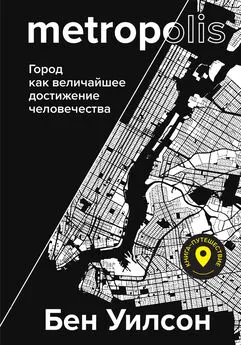

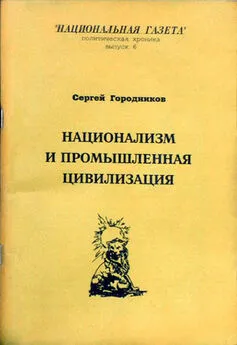

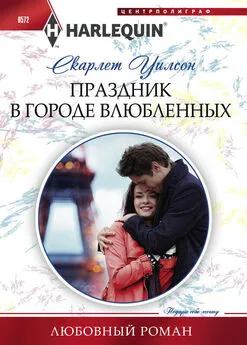
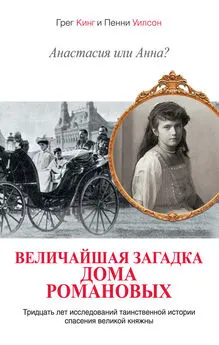
![Теа фон Харбоу - Метрополис. Индийская гробница [Романы]](/books/1096816/tea-fon-harbou-metropolis-indijskaya-grobnica-rom.webp)
